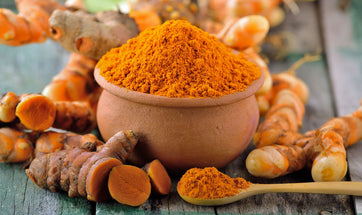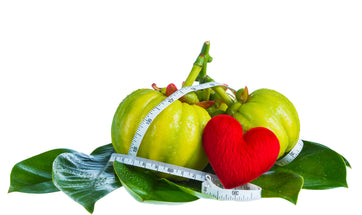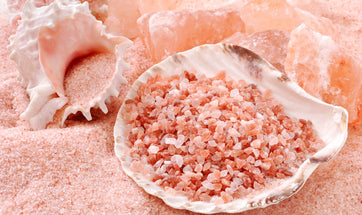ARE YOU HAVING "KNEE PAIN AFTER GYM"?
Is knee pain during gym affecting your workout ability?
Do you avoid high impact exercises? Are you becoming irregular at the gym? Do you feel continuous pain in your joints, even though you are hardly exerting yourself? There are only two possible answers to this - either you have become lazy or you have injured yourself.
Well if its laziness, you are the master of your destiny and only you who can solve that problem. However, if you are in pain, we have some advice for you. All muscle groups become sore after an extensive workout at the gym. The soreness is usually accompanied by pain, which subsides on its own over a period of time. But there are some pains, especially in the joints that take longer to heal and require extra attention from you. One such common form of joint pain post gym is that in the knee.
One of the most common post-exercise complaints, knee pain can be caused because of multiple reasons. This can range from incorrect form in even basic exercises to diving into high impact exercises way too soon. Our knees play the very important role of shock absorbers for the body. They absorb the impact of the slightest movement of the body, even the brunt of taking a simple step is absorbed by the knees. So you can very well understand the pressure on these absorbers during high impact activities such as running, jumping, bending, and gyming. Our knees, like our bodies, are an intricate combination of joints, bones, menisci, muscles, tendons, and ligaments, all supporting the joint. If your exercise results in stress to even one of these components, it results in knee pain. A consistent practice of these same motions over time and you can even develop tendonitis.
We discuss taking care of the knee pain in three parts, the right exercise (or movement), the right diet and the additional support.

EXERCISE
There are certain combinations of exercises that can help relieve the knee pain instead of putting more stress on it. We have listed some precautions that you can take while working out to better manage the knee pain during and after exercise:
> High Impact Exercises
When both your knees are experiencing pain, then it can be a clear case of severe stress on the joints due to high impact exercise. In such a case, you should avoid doing such exercises (running, lunging, splitting, sitting or standing for long hours) over an extended stretch. You can also alternate between high and low impact activities such as swimming.
> Stretching And Strengthening Exercises
Stretching helps restore stability of the knee and thus reduce the pain. In case there is no serious injury to the knee; this alternative is one of the best to recover from knee pain as it helps stabilize the joints. You can ask your trainer for some simple knee stretching and strengthening exercises that can help you manage knee pain.
> Reevaluate Your Form
Your running form has a huge impact on your knees. You need a specialist to monitor your posture while running, especially on the treadmill, who can suggest you the rectifications. Though running is not rocket science, yet the wrong alignment of the feet can cause injury or pain in the knee. Similarly, while lifting weights, stress on the right muscle is important to avoid injury. Therefore, the posture during lifting weights should also be studied.

DIET
Usually, after the age of 30, the probability of joint degeneration increases, thereby increasing the chances of knee pain after a workout. This condition is also called Osteoarthritis or ‘wear and tear arthritis’. Though the common means of the treatment do not change the progression of Osteoarthritis, nutritional supplements have shown to improve the condition.
When it comes to joint supplements, Glucosamine and Chondroitin are the more common remedies used to combat joint pains. But the latest studies have shown a preference for the supplement called Collagen.

Collagen Peptides for Healthy Bones and Joints
Collagen supplements have been around for years and were known for improving skin and nails. It is now identified that the rich amino acid concentration in the substance plays an important role in the building of joint cartilage. This nutritional supplement made from animal or fish materials has shown to significantly reduce knee pain and joint inflammation. Some of the other benefits of Collagen supplements have been highlighted below.
> Stimulates cartilage growth
> Comforts and supports weak joints
> Improves skin health
> Boosts muscle mass
> Prevents bone loss
> Promotes heart health
> Increases the strength of hair and nails
While Collagen-based supplements have a plethora of benefits, they also have some minor side-effects. This includes discomforts such as a heavy stomach, mild diarrhoea, and rashes in certain extreme cases. Considering the benefits outweigh risks, Collagen is now established as an effective remedy to knee pains.
There are many collagen supplements available in the market but our recommendation is the Kayos Collagen Peptide Powder with Glucosamine and Methylcobalamin. This unique combination of type 1 and 3 bovine collagen aides healthy joints and promotes bone health. Suitable for use by both men and women, this product also helps maintain healthy and youthful hair, skin and nails. This package of Kayos Naturals Collagen comes in black and weighs around 250gms. Further, its powder form makes it easy to mix with any of drink of your choice (coffee, juice, smoothie or simply water) as well. Try this supplement and you are sure to experience relief from the relentless knee pain after a workout session.

Additional Support
Over and above the points discussed above, you can also try the following to help manage the pain:
- Ice your knee
In many cases, the pain the knee is because of inflammation. To help manage this inflammation, you apply an ice pack on your knee. You can do it for 20-30 minutes, every 3-4 hours, for 2-3 days or you can continue the practice until the pain is reduced.
- Wrap your knee
You can use elastic bandages, patellar straps, sleeves, or even knee caps, to provide extra support to the knee. This helps the knee absorb the pressure and thus relieves the pain. These supports are usually worn during the exercise but can be worn through the day as well if there is a need.
- Elevate the leg
Many times the slacking blood flow to the legs can also cause pain in the knees. To manage this problem effectively, you should elevate the leg on a pillow when you sit or lie down. Whether it’s an injury or simply to relax, elevating the knee helps decrease puffiness and discomfort.
- Change the shoes
In the case of knee pain, it is a must to carefully select your footwear. Lack of support, specifically arch support contributes to knee pain. Cushioned insoles also help reduce the stress on the knees and thus reduce the knee pain. If a change in the shoes is not possible, doctors recommend the insertion of special insoles in the shoes to provide additional support.
Though the actions mentioned above can help you recover from knee pain, you still need to give your knee time to heal itself. These measures take time to completely heal the pain in your knee and thus require patience at your end. Also remember, different bodies heal at different rates, so there is no point making a comparison of your progress with others.
If, in spite of the techniques mentioned the knee pain persists; it is advised that you visit a specialist. Though the need for a specialist is rare, yet in certain extreme cases, a visit to the orthopedic and the treatment thereafter is the only solution to knee pain.
OUR NEWSLETTER
Get the latest news you need, straight to your inbox.




